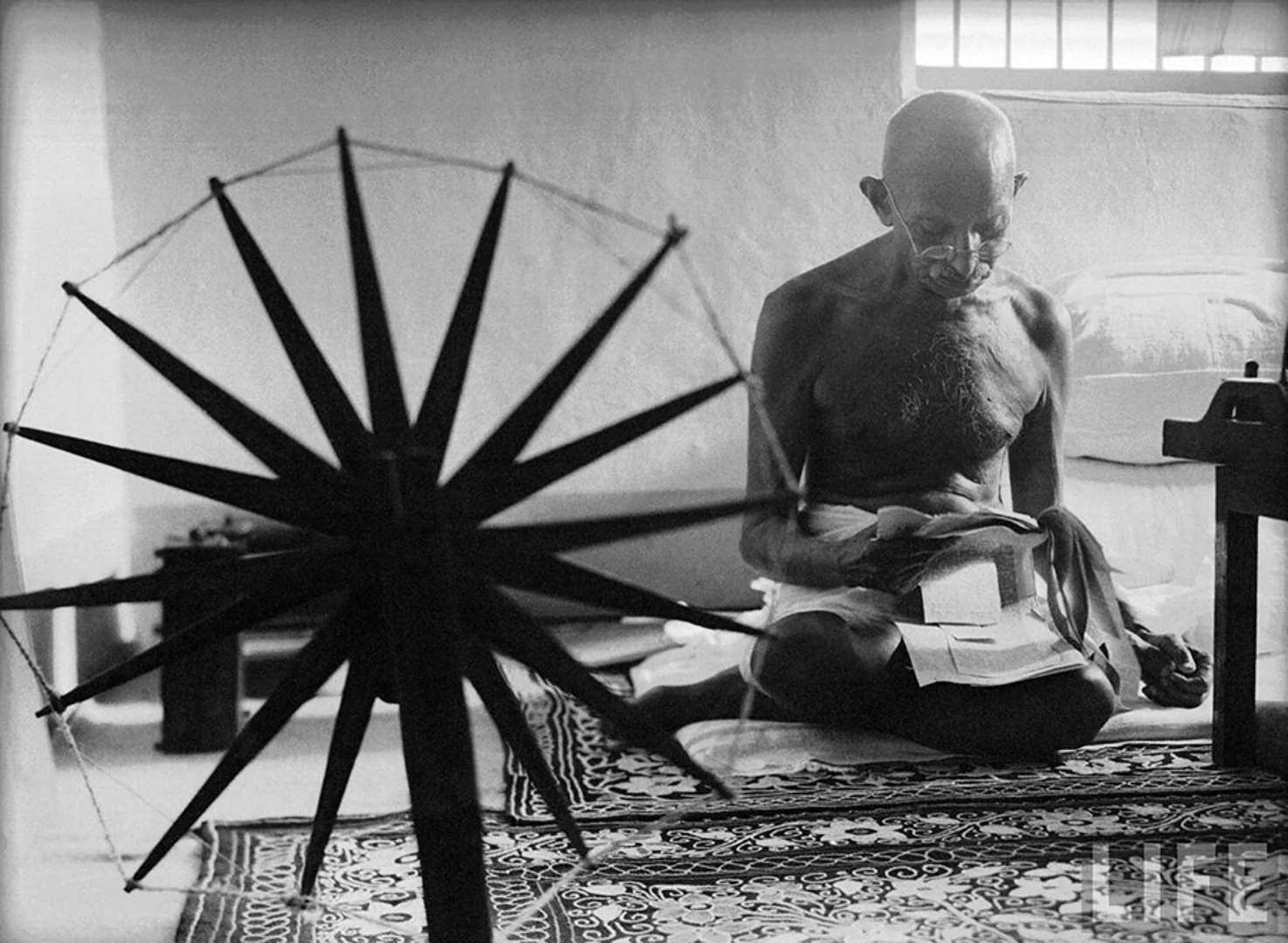In the picture, Gandhi is sitting on the floor in front of a spinning wheel, focused and balanced. No pathos - only inner discipline and calm strength. The spinning wheel (charkha), before it, is not just a tool. This is a symbol of the struggle for India's economic independence from the British Empire. Gandhi promoted hand weaving (khadi), urging Indians to abandon British textiles and produce their own clothing. Thus, the spindle became a sign of self-sufficiency, national pride, and non-violent resistance.
Margaret Burke-White learned to spin herself to get permission to take photos - Gandhi insisted that only those who understand the essence of manual labor can capture its essence. Thanks to this photograph, the whole world saw Gandhi not just as a political leader, but as a symbol of spiritual resilience and deep personal ethics.
The film quickly spread throughout the world and influenced not only the Indian independence movement but also future global human rights movements - from Martin Luther King's struggle to Nelson Mandela. "Gandhi and the Spindle" remains one of the most powerful images in the history of photojournalism, reminding that true strength is born in humility and consistency.

